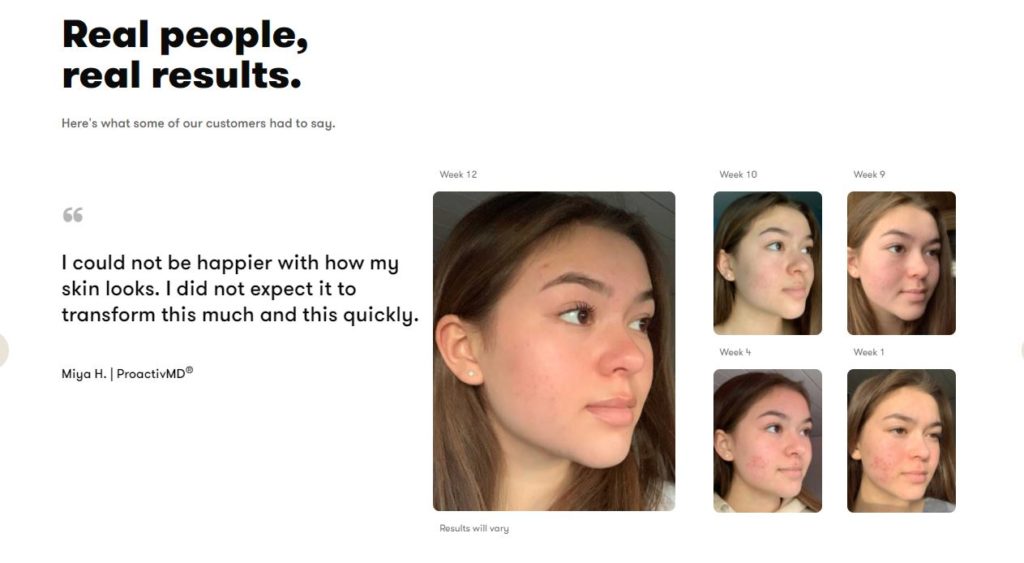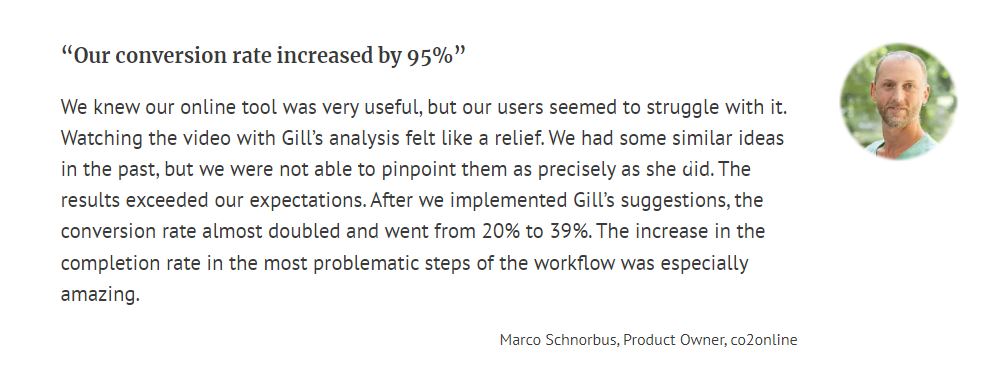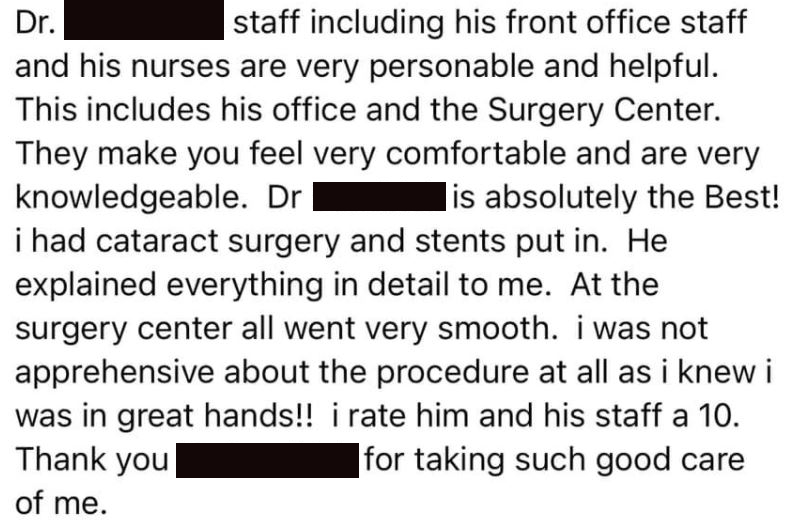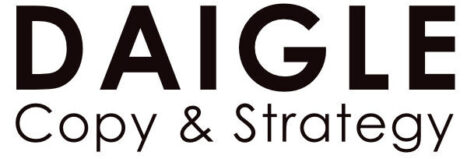Guess what? Your customers are trying to be a salesman for you. And they don’t want any pay or perks.
Know what else? I see businesses ignore this help all the time.
That’s too bad because your customers’ testimonials are way more powerful than just about anything you can put on your website.
Today, let’s take a look at the power of testimonials, how to get them and how to use them. After all, why should you work so hard selling when your customers are willing to do it for you?
Get out of your customer’s way
I see businesses make the same mistake every day. I’ll be looking at a business website, and it has a million words telling me how great they are.
But that doesn’t move potential customers, especially if they are unfamiliar with your brand or product.
What most easily moves a potential client to action is reading how actual paying customers think you have a great product.
Consider these statistics:
- 72% of consumers say testimonials and reviews increase their trust
- 88% trust online testimonials as much as recommendations from friends
- 72% of consumers will take action only after reading a positive review
But fancy stats aside, deep down, we know testimonials work. Like that time your friend with the fancy new widget gushed about it until you went and got one of your own.
We need to have confidence before we buy. We need to trust the person selling us something.
We want to know we won’t waste our money.
Testimonials do all those things. But you have to meet a few conditions.
Location, Location, Location
Slopping a few testimonials on your marketing isn’t going to work. You need a plan on where to place them. To do that, put yourself in the customer’s shoes.
Last time you were looking at a website for help, where would a testimonial have been most effective?
If you said the home page, then ding, ding, baby. We have a winner!
Placing a testimonial on the homepage increases trust quickly, especially if the visitor is new to your website.
Look at this simple but effective testimonial by Proactiv. They put it just below the fold of their homepage. The copywriter gives you time to get interested in the product, just enough to ask, “Will this work for me?”
Then they hit you with this.

Real, powerful, and in just the right spot.
Of course, don’t stop at one on your homepage. Sprinkle testimonials throughout your website because you aren’t sure where people will enter your site.
Drop one or two on your About page. Place a few on the Products or Services page. Put them anywhere you want clients to take some sort of action, whether that is reading more information or smashing the Buy Now button.
Just don’t put them all in one place. Website experts like Gill Andrews caution against piling them into a Testimonials page. It’s too easy to skip over and too pushy.
Testimonials need to be brought in like a friend bringing it into casual conversation. Putting them all on one page is like being brought invited to a party that turns out to be an MLM pitch.
It’s uncomfortable, and most people would rather avoid it.
Say the right thing in the right way
All good testimonials have a few things in common. First, they need to be short and direct. No one is going to read a four-paragraph testimonial.
If possible, they also need to have the person’s name and a headshot. That’s pretty much it for the physical part.
Now, for the hard part. A testimonial must tell the reader what they want to hear in an authentic way.
That’s a little different for each audience and business, so know your customers. Understand their pain point and know their natural voice. Your testimonial should address their concerns.
Take this example of a testimonial I found on a restaurant website.

I know, I know, there’s no name and no photo. It doesn’t need one. And yes, it’s full of grammatical errors.
Who cares? The choppy phrasing, spelling shortcuts, and redundancies build the needed authenticity.
It answers questions customers worry about like service, food quality, and atmosphere. And this person is excited about the restaurant!
It’s perfect.
Now try this one from Gill Andrews’s website. She offers website consulting and copywriting.

It’s just right for someone selling a service. It addresses worries like customer service, but the most important item is the numbers.
The testimonial uses hard data to prove that Gill Andrews’ service will increase profits.
That is very powerful in a service-based business where the bottom line is, well, the bottom line.
Okay, so you know your testimonials, like all good marketing, should sound like a real person and talk about the things that matter to them.
Now, how do you get them?
Gettin’ the goods
Here’s the good news. You probably already have testimonials; they just look like reviews.
Take a look at all those happy comments buried in the review section of your Facebook feed. For that matter, just scroll through some of the customer feedback on any of your social media accounts.
It’s all there.
Now, it may not be completely fleshed out, but that’s no problem. Here’s a real-life example. I found this testimonial on an ophthalmologist’s social media feed.

Not bad, but it’s not quite ready for prime time. The authenticity is there, and it addresses big questions a prospective patient might have. The good doctor made the patient feel comfortable, and she attests to his competency.
All good things.
But, as a prospective eye patient, I want to know how much her vision improved. If the eyesight didn’t improve, that’s a lot of money down the drain.
This testimonial needs to address that, so the doctor has some work to do.
It would be worth his while to reach out to that happy customer and thank them for the review. Then simply ask her if you could take her statements and create a testimonial that will be sent to her for approval.
Once they say yes, ask them some questions:
1. How is your vision now?
2. What were some of the things we did that made you feel comfortable?
Give her free reign to edit it. Just don’t ask her to write it herself. People freeze up when they get asked to write testimonials. Even if they have written a review and you give them the best guiding questions in the world, they may view it as just another thing to do.
But if you do the heavy lifting, they are usually more than happy to help.
Don’t forget to ask them if you can get a headshot from them. You may even be able to use their social media profile photo if it is appropriate.
If you want to be a little more proactive, you can do this same process, but do it right at the end of the sale. Of course, you’ll also have to ask some more questions.
As always, tell them what you are trying to accomplish. We want a testimonial, not hard feelings.
Start with the following and tweak them to fit your business.
1. What problem or challenge caused you to seek us out?
2. What were you feeling when you were trying to solve that problem?
3. What specific things about working with us helped solve that problem.?
(i.e., I have 20/20 vision after my eye surgery)
4. Is there anything we could have done to make the experience even better?
(Okay, this has nothing to do with the review. But you have their attention. So you may as well get some improvement feedback, right?)
This approach may not always be appropriate. For example, if you are a restaurant owner, it would be a little strange to hit someone up for a testimonial while they are still slurping their after-dinner coffee.
It might be more important to glean your information from social media, surveys, emails, and blog comments in those settings.
Get going
So, now you know where to start looking for testimonials, how to get them, and where to place them.
Now it is just a matter of getting out there and making it happen. C’mon, you can do this!
Your clients want to sell for you. Let ’em!

I’d love to hear your feedback and any questions you might have, so please don’t hesitate to contact me below or simply drop me a line at ted@daiglecopy.com


Useful information
Useful information
мойка окон https://cleaning-moscow-1.ru/uborka-ofisov/.
уборка квартир после ремонта https://cleaning-moscow-1.ru/uborka-posle-remonta/.
уборка после ремонта https://cleaning-moscow-1.ru/uborka-posle-remonta/.
уборка квартир москва https://cleaning-moscow-1.ru/uborka-kvartir/.
мытье окон https://cleaning-moscow-1.ru/uborka-ofisov/.
Thank you!